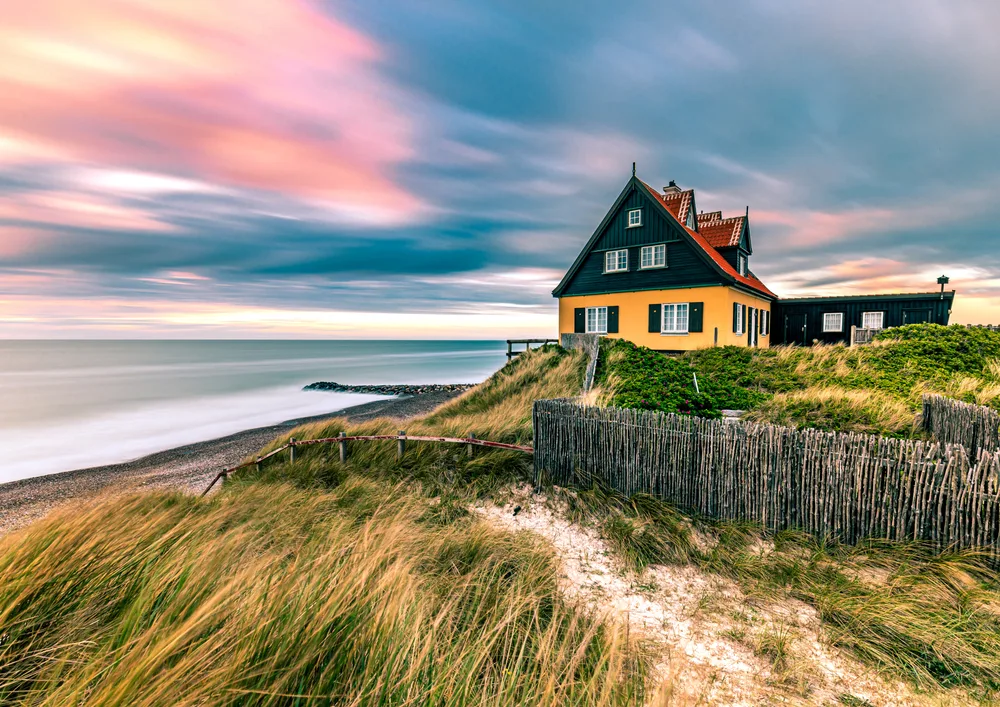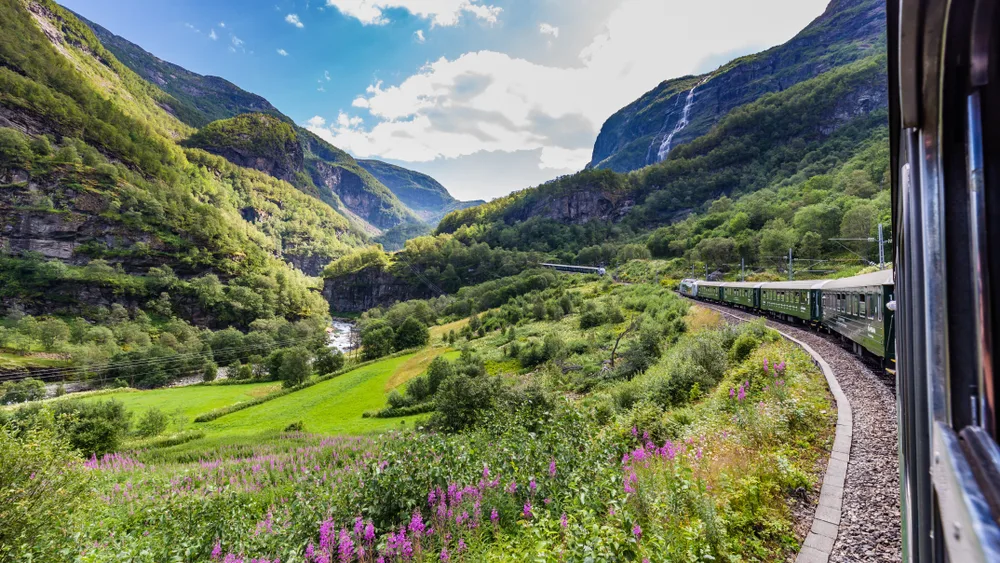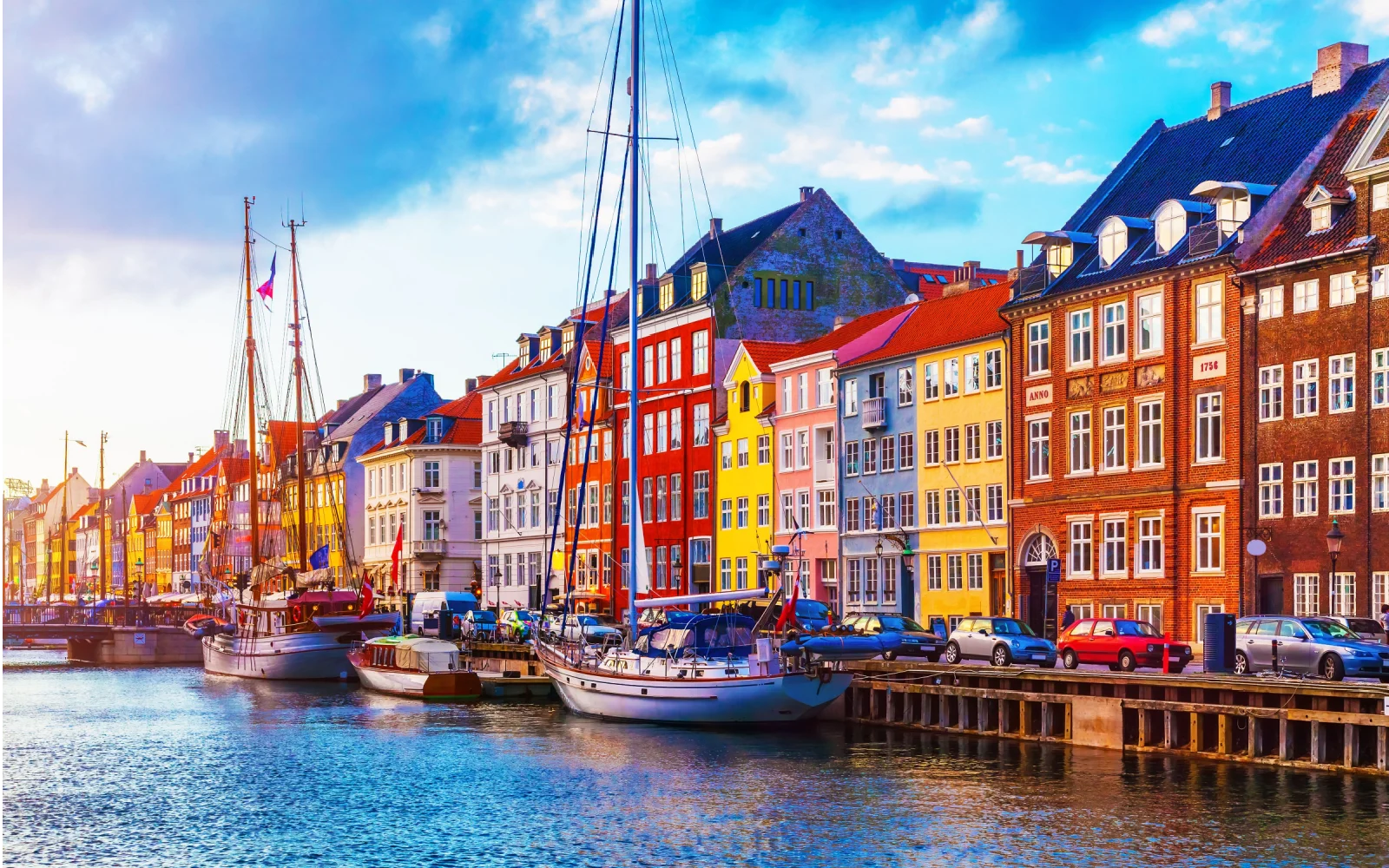What's the best time to visit Scandinavia?
The best time to visit Scandinavia is in the summer, when extended daylight hours and warm temperatures provide the perfect conditions for outdoor activities and exploring remote areas.
Cities burst into life with open-air dining, cultural festivals, and the most significant holidays, making it a vibrant season for tourists. However, be prepared for the summer months to be the busiest, as many visitors flock to the region to enjoy its brief but beautiful summer.
The Northern European region of Scandinavia, which consists of Norway, Sweden, and Denmark, is a great destination for lovers of culture and nature.
The vast countries of Norway and Sweden are a dream for nature lovers, from the chilly tundra of Lapland to the far north to the forests, lakes, and fjords further south. Scandinavia’s cities are also worth a visit.
The capitals of Oslo, Stockholm, and Copenhagen are modern cities at the cutting edge of art, design, and urbanism. There is a lot to see in Scandinavia, but the region is notorious for its extreme seasonal differences. Keep reading to learn more about the best time to visit this area.
The Overall Best Time to Visit Scandinavia

Larskuse/Shutterstock
The best time to visit Scandinavia is the summer, when the daylight hours stretch into eternity and the weather is warm enough to spend your whole visit outdoors. Scandinavia has long, harsh winters, but that pays off with the beautiful summers.
The weather can get quite warm, with temperatures in Denmark reaching into the low 70s in the hottest months (about 20-22 degrees Celsius). Further north in Scandinavia, the temperatures may not be warm enough for shorts and short sleeves, but they are still more present than the bitterly cold winters.
This weather is perfect for the many outdoor activities you can enjoy in Scandinavia, such as:
- Hiking
- Cycling
- Camping
- Kayaking
- Trekking
The daylight hours are at their longest in the summer. In June, Scandinavia gets 19 hours of sunlight on average, and close to 24 hours the further north you go. That gives you plenty of time to go exploring.
Summer is also the best time to go visit more remote parts of Scandinavia, such as Lapland or the Faroe Islands. The better weather means that ferries run more regularly and you have less of a chance of storms or ice disrupting your travel plans.
The season is a good time to experience Scandinavia’s waterways. Many Scandinavians have summer cabins on the islands along the coast, especially along southern Sweden, so these summer settlements come alive. The warmest season is also the best time to visit Scandinavian cities.
During the warmer weather, they come alive. People spill into the sidewalks, dining on open-air patios and taking the party into the streets out of cafes and bars. Seasonal attractions, such as Copenhagen’s Tivoli Gardens, are all open during this time.
The biggest holidays in Scandinavian countries usually take place in the summer, when normally straight-laced Scandinavians let loose. In Sweden, Midsummer Day takes place towards the end of June, celebrating the longest days of the year.
Summer is also the peak of music festival season in Scandinavia. Check out some of the world’s top names at:
- Bergenfest (June, Norway)
- Copenhell (June, Denmark)
- Way Out West (August, Sweden)
Besides the big-name festivals, you can catch many other cultural events such as jazz festivals, open-air film screenings, and so much more. Practically every Scandinavian town takes advantage of the short but good weather to live life to the fullest.
You should just keep in mind that this is the most popular time to visit Scandinavia, so expect plenty of other visitors during the short but popular summer.
Cheapest Time to Visit Scandinavia

Andrew Mayovskyy/Shutterstock
The cheapest time to visit Scandinavia is in the fall, although you can also find good deals in the winter. If you are flying into Scandinavia, then the least expensive time to visit is late January to late February.
February is the most affordable month for flights to Norway, and you can also get steep discounts on flights to other Scandinavian countries such as Denmark and Sweden.
Winter is not equally inexpensive throughout Scandinavia. For the far north, this is the high season as many visitors want to see the northern lights and the polar climate. The ski resorts are also packed with visitors.
If you want to save money when visiting in the winter, you can only visit part of Scandinavia. Meanwhile, in the late autumn you can avoid both the summer and winter rushes and find good discounts on hotels pretty much anywhere in the region.
In Bergen, one of the most popular tourist destinations in Norway, hotel prices drop by 25-30% as soon as September hits, and decrease the further into fall you get.
Least Busy Time to Visit Scandinavia

xbrchx/Shutterstock
The least busy time to visit Scandinavia is in the winter, but for the best combination of short lines and good weather, visit in May and early June. Winter doesn’t bring a lot of visitors to Scandinavia, but you also may not want to visit then (more on why later).
The crowds don’t tend to come until around midsummer, in late June, so May and early June is the perfect window of time to just enjoy what Scandinavia has to offer without the worst of the crowds.
By May, the weather tends to mellow out, even in the far northern parts of the region. Temperatures around Bergen are around 10 degrees Celsius, or 50 degrees Fahrenheit, making it easier to walk around.
The nature in Scandinavia is at its most beautiful in the spring. The snow melting means that the rivers and streams are rushing with water. The wildflowers and flowering trees are in bloom.
This is a great season for hiking, although you will need warmer layers than in the summer. The cities are perfect during the spring as well. Businesses are starting to set up their outdoor seating and town centers come alive, but aren’t packed with crowds.
Popular cruise ship destinations such as Bergen start to receive lots of arrivals by May, but they don’t peak until July, giving you a window of time when there are fewer day trippers crowding the streets.
The good thing about visiting Scandinavia is that the vast region has plenty of room for everyone. Even during the peak season, the crowds aren’t thick enough to affect your enjoyment except in the most popular destinations.
Worst Time to Visit Scandinavia

Piotr Krzeslak/Shutterstock
The worst time to visit Scandinavia is during the winter, unless you are truly passionate about experiencing a true Scandinavian winter.
Winter this far north shouldn’t be underestimated. Even towards the south of the region, in Denmark, winter temperatures are regularly below freezing and are downright chilly even slightly further north.
Snow is frequent and you need good outdoor gear even to go for a walk through the city. Although Scandinavian infrastructure is excellent, even it can get affected by winter weather.
More remote destinations, such as the Faroe Islands, are harder to reach because choppy seas prevent ferries and small planes from departing. The lack of daylight can also affect your travel plans. The sun only comes out for a few days during the Scandinavian winter, and not at all close to the Arctic Circle.
The permanent twilight can feel downright depressing and shorten how long you can go on hikes or other outdoor activities. However, if your main goal in visiting Scandinavia is to have the quintessential winter experience, this is the best season to visit.
You can take part in all the typical winter activities such as:
- Snow shoeing
- Dog sledding
- Cross-country skiing
- Chasing the Northern Lights
- Ice fishing
With the right cold weather gear, even winter in Scandinavia can be pleasant. Plus, you’ll be able to appreciate the warm indoors as well as the spirit of coziness (which the Danes call hygge) even more after being outdoors in the chill.
Scandinavia by Month: Climate & Activities

Intreegue Photography/Shutterstock
Still unsure about the best time to visit Scandinavia? Take a look at our summary of the weather and climate by month below:
January
Winter temperatures in Scandinavia vary, ranging from approximately 14-36°F. It’s a snowy and cold month, ideal for winter sports such as skiing in Norway’s mountains or exploring festive holiday markets.
February
Similar to January, February maintains cold temperatures between 14-36°F. It’s an excellent time for winter activities like dog sledding in Sweden or enjoying the northern lights in Iceland.
March
As spring slowly arrives, temperatures range from 21-43°F. March offers a transition to milder weather, and visitors can enjoy the unique experience of the “blue hour” in the evenings.
April
Spring continues with temperatures between 30-50°F. It’s an ideal time for witnessing the blooming cherry blossoms in Copenhagen, Denmark, and exploring the awakening landscapes.
May
May sees temperatures ranging from 39-59°F. It’s a pleasant month for outdoor activities, such as hiking in Norway’s fjords or experiencing the vibrant cultural scene in Stockholm, Sweden.
June
Summer arrives with temperatures between 46-64°F. June offers long daylight hours, making it perfect for exploring the scenic landscapes, enjoying outdoor festivals, and experiencing the midnight sun in northern regions.
July
July maintains mild temperatures from 50-68°F. It’s a popular month for outdoor adventures, including hiking in Finland’s national parks or sailing along Norway’s coastal fjords.
August
August sees temperatures between 48-66°F. It’s an ideal time for exploring the historic sites of Denmark, attending cultural events, and enjoying the beaches along Sweden’s coastline.
September
As fall begins, temperatures range from 40-57°F. September offers a colorful landscape, and visitors can experience the changing seasons, from the autumn foliage in Finland to the crisp air in Iceland.
October
Fall temperatures range from 31-48°F. It’s a cozy month for cultural exploration, including visiting museums in Oslo, Norway, or enjoying the vibrant autumn markets in Stockholm.
November
November sees temperatures between 23-40°F. It’s a prelude to winter, and visitors can experience the charm of Christmas markets in Copenhagen or witness the Northern Lights in Iceland.
December
Winter returns with temperatures ranging from 17-36°F. December brings a festive atmosphere, with Christmas markets in Norway, winter sports, and the opportunity to witness the enchanting Aurora Borealis in northern regions.
Frequently Asked Questions

Oslo, Norway – Dec 28, 2019: Traditional Christmas market with falling snow/Alex Cimbal/Shutterstock
Here are some of the most common questions people have asked about visiting Scandinavia.
How many days do you need in Scandinavia?
You should spend at least ten days in Scandinavia, but this vast region can’t be covered completely on one vacation.
Which is the best country in Scandinavia to visit?
If you can only visit one Scandinavian country, head to Norway, which has the most spectacular landscapes thanks to its fjords.
When should I go to Nordic countries?
Summer is the best time to visit any of the Nordic countries, not just Scandinavia, thanks to the warmer weather and long days.
When is the best time of year to visit Sweden?
Summer is the best time of year to visit Sweden thanks to warmer temperatures and plenty of traditional and modern festivals.
Is visiting Scandinavia expensive?
Scandinavia is one of the most expensive regions in the world, but you can save some money by visiting during the shoulder seasons.
So, What’s the Best Time to Visit Scandinavia?
The best time to visit Scandinavia is during the short but beautiful summer. Between the middle of June and the end of August, the weather is sunny and warm, perfect for exploring. Visit in May or September to get good weather but fewer crowds.



